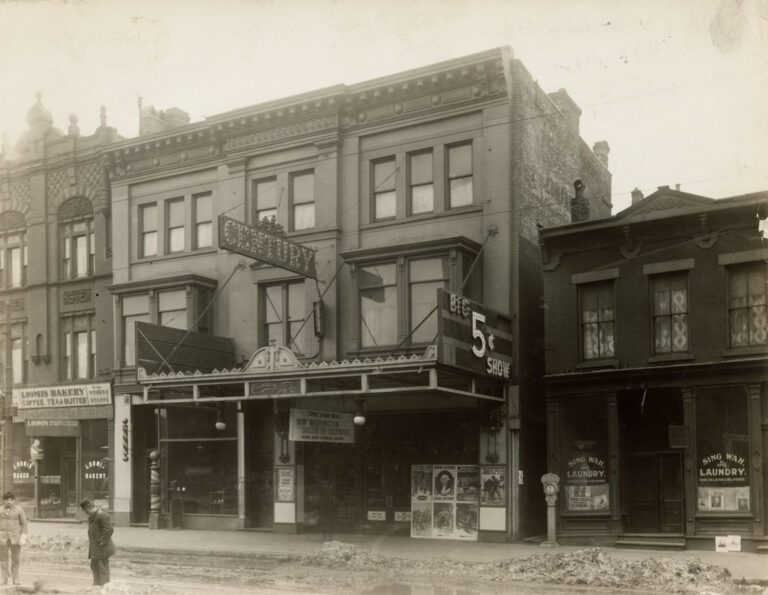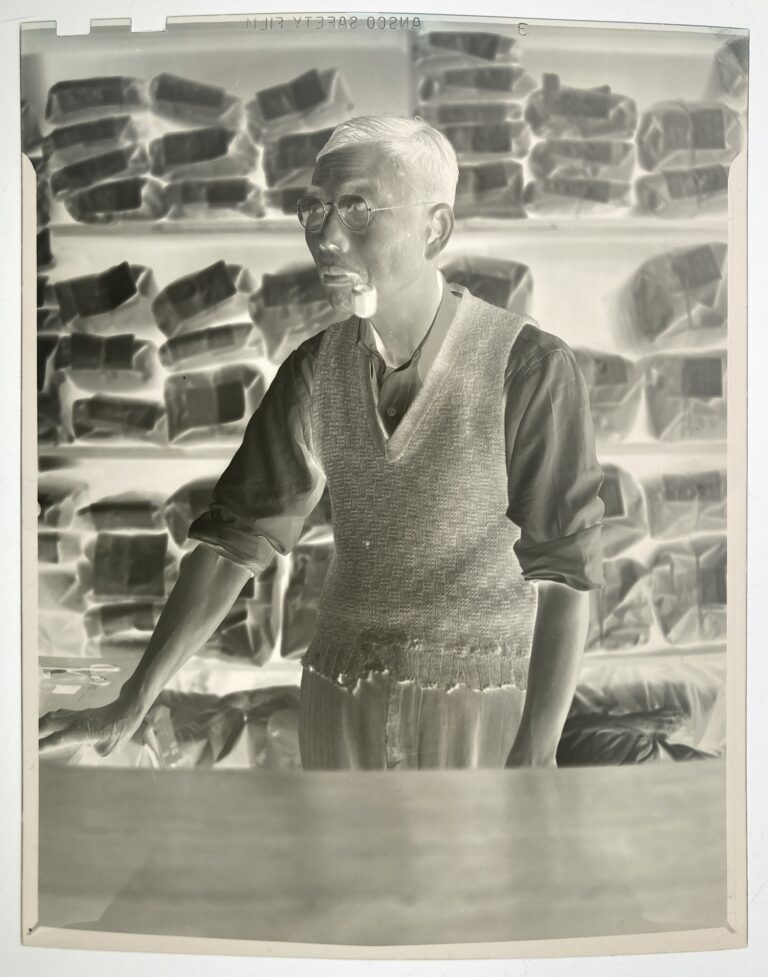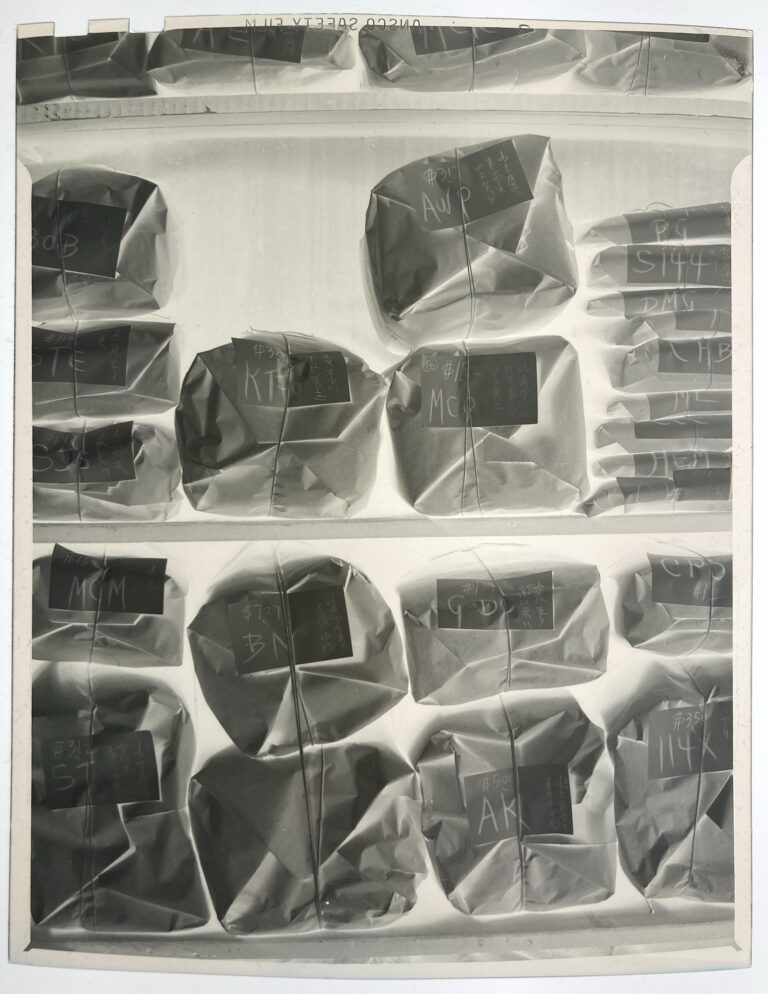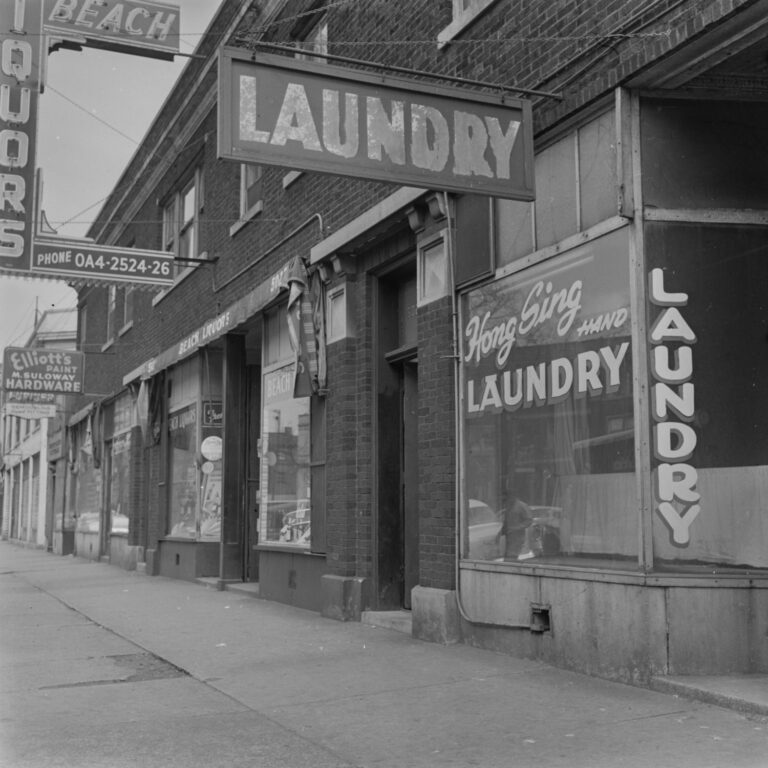While conducting research in the Abakanowicz Research Center, CHM communications intern Lucia Wang found negatives documenting Chinese hand laundry shops in Chicago. In this blog post, she shares a brief history of Chinese laundries in Chicago within the larger context of Chinese immigration to the United States.
“In another life, I would have really liked just doing laundry and taxes with you.”
As this line went viral and Michelle Yeoh made history as the first Asian woman to win Best Actress at the Academy Awards, the film Everything Everywhere All at Once (2022) has reshaped the way Chinese laundry workers are depicted onscreen, introducing an alternative positive perspective. Why do Chinese Americans in films or tv shows always seem to run laundries? Why are soap and irons often associated with them and suggest a negative connotation?
The story can be traced back to the mid-nineteenth century California Gold Rush, during which numerous Chinese people immigrated to the United States. However, many of them were forced to work in laundries due to many reasons, including their limited proficiency in English. In 1851, Wah Lee opened the first Chinese laundry in San Francisco, which sparked an explosive growth in similar stores. (1) White workers often perceived Chinese laborers as a threat to their own employment, due to the low wages and long working hours Chinese laborers performed. The hostility reached its peak with the enactment of the Chinese Exclusion Act in 1882, which put a 10-year ban on Chinese laborers from immigrating to the United States. The stigmatized depiction of Chinese laundries and workers continues to appear on posters, trading cards, and magazine illustrations, even current popular culture.

A streetscape showing businesses on the 1600 block of West Madison Street including Sing Wah Hand Laundry (right), Chicago, c. 1910. CHM, ICHi-067272; Charles E. Barker, photographer
The expansion of Chinese laundries extended to the Midwest, with the first Chicago store opening in 1872 at 167 West Madison Street (now 158 West Madison Street). (2) In Paul C. P. Siu and John Kuo Wei Tchen’s book The Chinese Laundryman A Study of Social Isolation, a comparison of the distribution of Chinese laundries on city maps from 1874 and 1913 reveals that they were initially concentrated around Madison, Clark, State, and Randolph Streets—what is now known as the Loop. Those locations reflect where Chicago’s Chinese community lived during that time—in 1890, 25 percent of the city’s 600 Chinese lived along Clark between Van Buren and Harrison Streets. The distribution of Chinese laundries expanded outward from the center of the Loop, reaching as far north as Rogers Park, as far west as Jefferson Park, and as far south as Roseland by 1930.
In 1928, the number of Chinese laundries peaked at 704 in the United States. (3) Lyle Mayer’s 1948 photograph collection, taken in the vicinity of Roosevelt University, which was housed within the Auditorium Building on South Michigan Avenue in the Loop, features two photographs of a Chinese laundry. This negative depicts an elderly laundryman standing in front of a cabinet full of paper packets.

Negative of a Chinese laundryman, Chicago, April 5, 1948; Lyle Mayer, photographer. Lyle Mayer Photograph Collection, CHM, Box 2, Unit #46, S4363. Call Number 1986.0207.
A closer look reveals that each paper bag was secured with string and included a slip of paper bearing the customer’s name, allowing the efficient retrieval of laundered clothing. This laundry is a relatively spacious example. The size and environment of each laundry were usually influenced by the surrounding neighborhood. In an underserved community, a typical shop would have one person working behind a counter protected by security bars.

Negative showing packet packets of laundry at a Chinese laundry, Chicago, April 5, 1948; Lyle Mayer, photographer. Lyle Mayer Photograph Collection, CHM, Box 2, Unit #46, S4364. Call Number 1986.0207.
As we move south in the city, Mildred Mead’s 1956 photograph showcases the Hong Sing Hand Laundry located in the Hyde Park-Kenwood neighborhood. Similar to Mayer’s photographs, this location’s proximity to the University of Chicago suggests a recurring pattern of clustering near apartments that accommodated young individuals or white-collar office workers.

Hong Sing Hand Laundry at 5025 S. Lake Park Ave. in the Hyde Park-Kenwood neighborhood, Chicago, April 18, 1956. CHM, ICHi-087921. Mildred Mead, photographer
Nowadays, traditional hand laundries are disappearing in Chicago and across the United States, and even those owned by Chinese Americans are transitioning into laundromats. Rather than casting them as a stigmatized relic of the past, I want to underscore their significance as life-saving opportunities for immigrants. Moreover, they were catalysts for protests and labor unions, contributing significantly to the story of Chinese Americans’ quest for equality in the United States. For those who are interested in this topic, the Chinese Hand Laundry Alliance is a worthwhile starting point.
Footnotes
- Iris Chang, The Chinese in America: A Narrative History (New York: Penguin Publishing Group, 2004), 49.
- Paul C. P. Siu and John Kuo Wei Tchen, The Chinese Laundryman: A Study of Social Isolation (New York: NYU Press, 1987), 23.
- Siu and Tchen, 34.
Additional Resources
- Read the Encyclopedia of Chicago entry on Laundries and Laundering
- Read ABC7 News, “Why Chicago’s Chinatown is growing as others see Asian populations decline,” May 18, 2022.
Comments